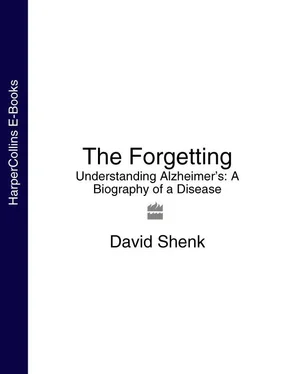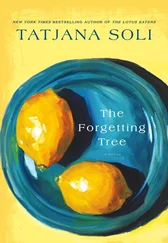And then there was the problem of physical mass. Skeptics calculated that if specific memories were contained in molecules the way Ungar suggested, the total number of memories accumulated over a lifetime would weigh somewhere in the vicinity of 220 pounds. The brain would literally be weighed down by thought and ideas.
After a decade or so, the notion and burgeoning industry of memory molecules crumbled into dust. It is now one particularly humiliating memory that many neuroscientists would just as soon not retain. What has grown up out of that rubble over the last thirty years is a very different understanding of memory—not as a substance but as a system . Memories are scattered about; that part the memory molecularists had right. Memory is everywhere. But it is everywhere in such a way that it is impossible to point to any one spot and identify it with an explicit memory. We now know that memory, like consciousness itself, isn’t a thing that can be isolated or extracted, but a living process, a vast and dynamic interaction of neuronal synapses involved in what Harvard’s Daniel Schacter elegantly terms “a temporary constellation of activity.” Each specific memory is a unique network of neurons from different regions of the brain coordinating with one another. Schacter explains:
A typical incident in our everyday lives consists of numerous sights, sounds, actions, and words. Different areas of the brain analyze these various aspects of an event. As a result, neurons in the different regions become more strongly connected to one another. The new pattern of connections constitutes the brain’s record of the event.
The power of the constellation idea is reinforced by the understanding of just how connected the 100 billion neurons in the brain actually are. A. G. Cairns-Smith, of the University of Glasgow, observes that no single brain cell is separated from any other brain cell by more than six or seven intermediaries.
The molecular basis for these synaptic constellations that can be reignited again and again (though never in precisely the same configuration), is a biochemical process called long-term potentiation (LTP) that intensifies the affinity between specific neurons after a significant connection is made. Think of an ant farm, with worker ants constantly building new tunnels among one another; once a tunnel is built, transport becomes many times easier; an easy, natural connection has been created between those two points. With memory formation and retrieval, pathways are at first built and later simply used. Each notable experience causes a unique set of neurons to fire in conjunction with one another. As a result, those connections become chemically more sensitive to one another so that they can more easily trigger each other again. With that unique constellation of synapses, one has created a permanent physical trace of the original sensation. Neurologists call these memory traces “engrams.”
The ant farm analogy also applies in another important way: Neurobiologists have found that memory formation is slow . Long-term memories can take many months or even years to fully form.
Long-term memories are durable, but not unassailable. They can last a lifetime, but from the first moments are subject to influences from other memories and experience. Inevitably, as they age and are evoked again and again, all memories change in character.
This is part of the brain’s famous plasticity, its ability to adapt to life’s events. Plasticity makes us as much creatures of our own experience as we are products of evolution. Not everything in the brain is adaptable, of course; much of it comes “hard-wired,” genetically preprogrammed to specialize and perform specific tasks such as processing light and sound, regulating heart rate and breathing, and so on. But the regions reserved for fine motor skills, intelligence, and memory are more like soft clay, able to take on a definite shape and yet remain constantly responsive to new stimuli.
Memory constellations, then, are not fixed, immutable collections of memories, but ever-variable collections of memory fragments that come together in the context of a specific conscious moment. Any common free-association experiment is a vivid illustration of this point. For me, at this moment, the word “cat” prompts → a thought of Brownfoot, my boyhood feline friend → the garage roof she used to leap from → the 1971 T-top Corvette my father used to drive → the tragicomic month in which Mom wrecked this car twice → a feeling of malaise associated with my parents’ divorce years later. This instant montage of memories is neither chronological nor predictable, even by me. If someone were to prompt me with “cat” tomorrow, depending on my mood or recent experience, I might think of the cat that my daughter called to yesterday outside our house. Or it could be that Brownfoot will come to mind, but that from there I will shift to an image of my playing her dentist, and then I might think of my own current dentist and how I’m way overdue for a cleaning. That guilty feeling might then trigger another distant idea, related only by a parallel feeling of guilt. And so on.
Taken together, this interconnected universe of constellations in each of us forms the core of who we are. Our life’s ocean full of memory waves wash against one another to create a complex and ever-adapting character.
The director Martin Scorsese is an interesting memory-character study, mostly because he seems to forget very little compared to others. He remembers not just every shot and crew credit from each of the thousands of movies he’s seen, observes the New Yorker’s Mark Singer, but also every detail of every book, song, and personal experience he’s had in fifty-plus years—“all of it,” Singer writes, “seemingly instantly retrievable.”
Singer depicts the Scorsese memory constellation in action. After a colleague criticizes a piece of film dialogue as “too piercing,” Scorsese is instantly thrown into an interconnected memory odyssey:
He was reminded of the old Harry Belafonte calypso tune “The Banana Boat Song”—or, rather, a parody of same by Stan Freberg, which included a reference to “piercing,” and that reminded him of another Freberg routine, a parody of the television series Dragnet , which in turn reminded him of Pete Kelly’s Blues , a feature film directed by Jack Webb, the star of Dragnet . The production designer of Pete Kelly’s Blues , in which Webb played a bandleader during the twenties, was a Disney veteran who brought to it a remarkably vivid palette, a reality-heightening Technicolor glow reminiscent of the live-action Disney children’s films of the forties.… And, Scorsese further recalled, Pete Kelly’s Blues had a screenplay by Richard L. Breen, whose name, curiously, Webb had heralded before the title. When the picture was released, in 1955, the year Scorsese turned thirteen, he followed it from theatre to theatre, as was his habit.… [He then recalled all the specific theaters he used to frequent.] One particular Saturday afternoon double-feature at the Orpheum came to mind: Bomba the Jungle Boy and Great White Hunter.…
The pathways linking engrams can be built on temporal, intellectual, or aesthetic associations, and when the mind really wanders, during daydreams or at night before sleep sets in, it’s amazing what sort of involuntary memory leaps one makes, from impressions that often have no logical or logistical relationship but which share a texture or smell or emotional fragment. What’s more—and this may be the single most important point to understand about memory— every time a memory is recalled, new trails are made .
The act of remembering itself generates new memories. Which means that Emerson was exactly right when he noted in his journal: “Most remembering is only the memory of memories, & not a new & primary remembrance … HDT [Henry David Thoreau] noticed this to me some time ago.” Overlap, in other words, is not only built into the biology of memory. It is the very basis of memory—and identity. New memory traces are laid down on top of a foundation of old memories, and old memories can only be recalled in a context of recent experiences. Imagine a single painting being created over the course of a lifetime on one giant canvas. Every brush stroke coming into contact with many others can be seen only in the context of those prior strokes—and also instantly alters those older strokes. Because of this, no recorded experience can ever be fully distinct from anything else. Whether one likes it or not, the past is always informed by the present, and vice versa.
Читать дальше












